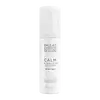What's inside
What's inside
 Key Ingredients
Key Ingredients

 Benefits
Benefits

 Concerns
Concerns

 Ingredients Side-by-side
Ingredients Side-by-side

Water
Skin ConditioningButylene Glycol
HumectantCetyl Alcohol
EmollientCyclopentasiloxane
EmollientDimethicone
EmollientSalicylic Acid
MaskingAvena Sativa Bran Extract
AbrasiveAllantoin
Skin ConditioningCamellia Sinensis Leaf Extract
AntimicrobialGlycyrrhiza Glabra Root Extract
BleachingEpilobium Angustifolium Flower/Leaf/Stem Extract
Skin ConditioningLauric Acid
CleansingGlycerin
HumectantPolysorbate 20
EmulsifyingSorbitan Stearate
EmulsifyingMagnesium Aluminum Silicate
AbsorbentAmmonium Acryloyldimethyltaurate/Vp Copolymer
PEG-40 Stearate
EmulsifyingXanthan Gum
EmulsifyingHexylene Glycol
EmulsifyingSodium Hydroxide
BufferingEthylhexylglycerin
Skin ConditioningDisodium EDTA
Phenoxyethanol
PreservativeCaprylyl Glycol
EmollientWater, Butylene Glycol, Cetyl Alcohol, Cyclopentasiloxane, Dimethicone, Salicylic Acid, Avena Sativa Bran Extract, Allantoin, Camellia Sinensis Leaf Extract, Glycyrrhiza Glabra Root Extract, Epilobium Angustifolium Flower/Leaf/Stem Extract, Lauric Acid, Glycerin, Polysorbate 20, Sorbitan Stearate, Magnesium Aluminum Silicate, Ammonium Acryloyldimethyltaurate/Vp Copolymer, PEG-40 Stearate, Xanthan Gum, Hexylene Glycol, Sodium Hydroxide, Ethylhexylglycerin, Disodium EDTA, Phenoxyethanol, Caprylyl Glycol
Water
Skin ConditioningLactic Acid
BufferingGlycolic Acid
BufferingSalicylic Acid
MaskingNiacinamide
SmoothingHamamelis Virginiana Water
AstringentMaltodextrin
AbsorbentAloe Barbadensis Leaf Juice Powder
Skin ConditioningChamomilla Recutita Flower Extract
MaskingCucumis Sativus Fruit Extract
EmollientGlycyrrhiza Glabra Root Extract
BleachingPanax Quinquefolius Root Extract
AstringentPapain
Skin ConditioningBromelain
Skin ConditioningCitric Acid
BufferingAmylopectin
Dextrin
AbsorbentEthylhexylglycerin
Skin ConditioningSodium Hydroxide
BufferingPotassium Sorbate
PreservativePhenoxyethanol
PreservativePropanediol
SolventPolydextrose
HumectantWater, Lactic Acid, Glycolic Acid, Salicylic Acid, Niacinamide, Hamamelis Virginiana Water, Maltodextrin, Aloe Barbadensis Leaf Juice Powder, Chamomilla Recutita Flower Extract, Cucumis Sativus Fruit Extract, Glycyrrhiza Glabra Root Extract, Panax Quinquefolius Root Extract, Papain, Bromelain, Citric Acid, Amylopectin, Dextrin, Ethylhexylglycerin, Sodium Hydroxide, Potassium Sorbate, Phenoxyethanol, Propanediol, Polydextrose
 Reviews
Reviews

Ingredients Explained
These ingredients are found in both products.
Ingredients higher up in an ingredient list are typically present in a larger amount.
Ethylhexylglycerin (we can't pronounce this either) is commonly used as a preservative and skin softener. It is derived from glyceryl.
You might see Ethylhexylglycerin often paired with other preservatives such as phenoxyethanol. Ethylhexylglycerin has been found to increase the effectiveness of these other preservatives.
Glycyrrhiza Glabra Root Extract is an extract of the roots of Licorice. It has been found to have several benefits such as skin hydrating, conditioning, and soothing.
One component, glabridin, has extra potent antioxidant and soothing properties. It has also been found to block pigmentation from UVB rays in guinea pigs.
Licorice Root also contains a flavonoid. Flavonoids are a natural substance from in plants. Flavonoids also have antioxidant properties.
Another component, glycyrrhizin, has been found to have anti-inflammatory and antimicrobial benefits. This may make licorice root extract effective at treating acne. However, more research is needed to support this.
Liquiritin is one of the flavone compounds found in licorice. It has been found to help lighten skin by preventing tyrosinase from reacting with tyrosine. When the two react, protein is converted to melanin. Melanin is the substance in your body that gives your features pigmentation.
Learn more about Glycyrrhiza Glabra Root ExtractPhenoxyethanol is a preservative that has germicide, antimicrobial, and aromatic properties. Studies show that phenoxyethanol can prevent microbial growth. By itself, it has a scent that is similar to that of a rose.
It's often used in formulations along with Caprylyl Glycol to preserve the shelf life of products.
Salicylic Acid (also known as beta hydroxy acid or BHA) is a well-known ingredient for treating skin that struggles with acne and clogged pores. It exfoliates both the skin's surface and deep within the pores to help clear out buildup, control oil, and reduce inflammation.
Unlike AHAs (alpha hydroxy acids), salicylic acid is oil-soluble. This allows it to penetrate into pores which makes it especially effective for treating blackheads and preventing future breakouts.
Salicylic acid is also known for its soothing properties. It has a similar structure to aspirin and can calm inflamed or irritated skin, making it a good option for acne-prone skin that is also sensitive.
Concentrations of 0.5-2% are recognized by the U.S. FDA as an over-the-counter topical acne product.
It can cause irritation and/or dryness if one's skin already has a compromised moisture barrier, so it's best to focus on repairing that before introducing this ingredient into your routine.
While salicylic acid does not increase sun sensitivity, it’s still important to wear sunscreen daily to protect your skin.
If you are looking for the ingredient called BHA or Butylated Hydroxyanisole, click here.
Learn more about Salicylic AcidSodium Hydroxide is also known as lye or caustic soda. It is used to adjust the pH of products; many ingredients require a specific pH to be effective.
In small amounts, sodium hydroxide is considered safe to use. However, large amounts may cause chemical burns due to its high alkaline.
Your skin has a natural pH and acid mantle. This acid mantle helps prevent harmful bacteria from breaking through. The acid mantle also helps keep your skin hydrated.
"Alkaline" refers to a high pH level. A low pH level would be considered acidic.
Learn more about Sodium HydroxideWater. It's the most common cosmetic ingredient of all. You'll usually see it at the top of ingredient lists, meaning that it makes up the largest part of the product.
So why is it so popular? Water most often acts as a solvent - this means that it helps dissolve other ingredients into the formulation.
You'll also recognize water as that liquid we all need to stay alive. If you see this, drink a glass of water. Stay hydrated!
Learn more about Water